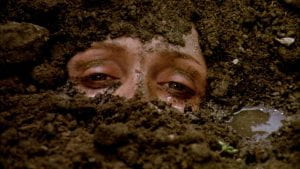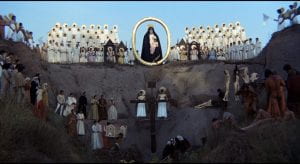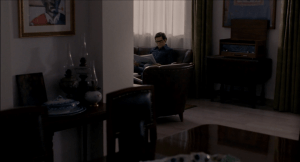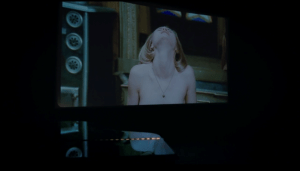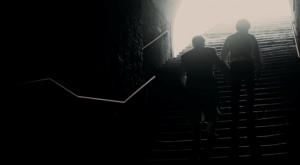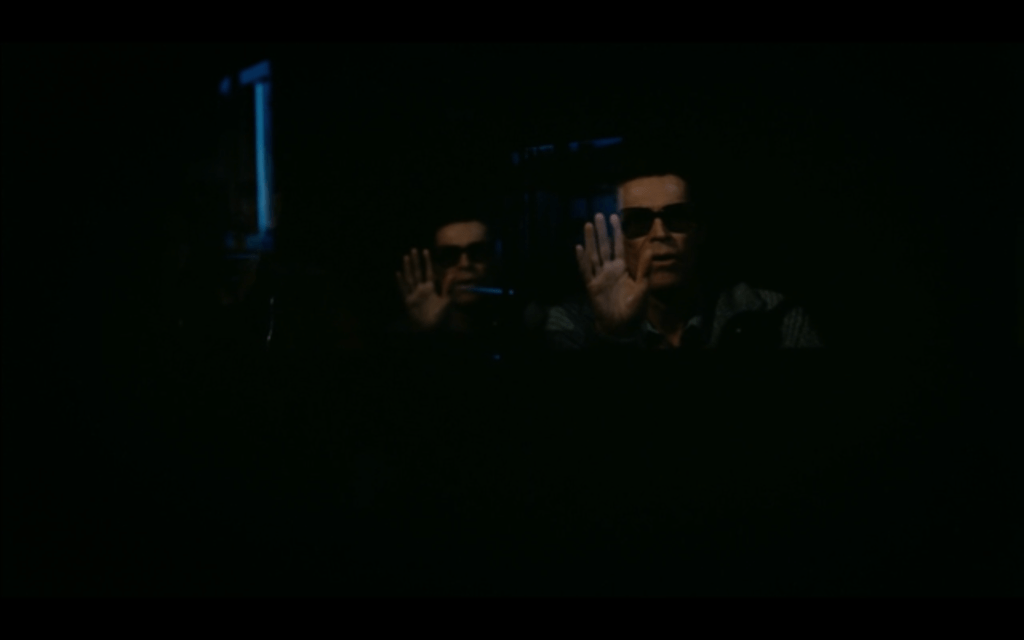
Guest post by Chris Forrester.
Ask any cinephile what unmade film haunts them the most and they’ll certainly have an answer. Maybe it’s Jodorowsky’s much-obsessed-over Dune adaptation, maybe it’s Kubrick’s Napoleon – trumped by the financial failure of Sergei Bondarchuk’s Waterloo – or his version of A.I., eventually directed by Steven Spielberg in 2001 (of all years!). Unfinished and unmade films are like the specters of great artists who left behind unfinished legacies, and Abel Ferrara’s Pasolini (2014) is a ghost story about the final days of the great artist who gives it its name, haunted by the life and art that was lost when he was murdered in November of 1975.
A wildly unconventional biopic, of sorts, by a wildly unconventional filmmaker, Pasolini concerns the rather uneventful few days leading up to the legendary Italian filmmaker Pier Paolo Pasolini’s passing, as he completes work on his final film, has various encounters with family and journalists, cruises for sex in the streets of Rome, and works on both a novel and screenplay, neither of which would ever be completed. The final film in question is, of course, the controversial Salò, or the 120 Days of Sodom (1975), about a group of fascist libertines who abduct 18 teenagers and subject them to four months of extreme physical, mental, and sexual torture in the last days of the Italian Social Republic (also called the Republic of Salò), the fascist-occupied northern region of Italy. Salò has been alternately condemned and celebrated by critics and artists since its release (it premiered at the Paris Film Festival three weeks after Pasolini’s death), and it’s often theorized that the film and/or Pasolini’s broader political ideologies were an incentive for his murder.
Pasolini, the filmmaker, was a great many things: an artist, an intellectual, a poet and author, an outspoken Communist, a homosexual. Some of them – his political and sexual identities, specifically, but also their expression in his art – were in direct opposition to the staunch, institutionalized Catholicism of 1940s Italy, and in 1949 Pasolini was outed against his will. But he nonetheless felt an enduring respect for his homeland, particularly its history, and defining of his multimedia oeuvre is a modern outsider’s love for Italy’s peasants, proletarians, and the lumpenproletariat.
Pasolini began his filmmaking career as something of a neorealist – with Accattone (1961) cementing his interest in class politics, his preference for working with non-actors local to his films’ settings, and his penchant for blurring the sacred and the profane – but quickly his style morphed into something more complex. With films like The Gospel According to St. Matthew (1964) and Teorema (1968), he moved into a more sublime register of cool realism contrasted against poetic sensuality. And always backing his films was a rigorous attention to the nation’s political ongoings, expressed through essays and poetry.
By late 1975, when Ferrara’s film is set, Pasolini’s love for his country had become conflicted by its stifling consumerism. While his early and mid-career works jumped regularly between past (Oedipus Rex, The Gospel According to St. Matthew) and present (Accattone, Mamma Roma, Love Meetings), his feature films from 1969’s Medea onwards located themselves only in the past. The three most significant of these are The Decameron (1971), The Canterbury Tales (1972), and Arabian Nights (1974), which together comprise what has been called his Trilogy of Life. Each finds its source material in selections from famous literary works (with which they share their names), richly adapted by Pasolini to contradict the source material’s staunch sexual morals; their project is to find liberation in the past, in tales of peasants and proletariat, and in the pure joy of unmoralized sexuality.

The trilogy’s reception brought Pasolini widespread acclaim, but also frustration – the cultural embrace of their content and images lead to a sort of commodification of the sexuality in them that he had intended as non-pornographic, and they had inspired a cycle of softcore porn films. And so enter Salò, a film which meets at the intersection of three pasts (that of Marquis de Sade, whose unfinished 1904 novel The 120 Days of Sodom it adapts; that of Dante, whose Inferno it loosely invokes in the title cards that provide structure to its descent into hell; and of course that of its setting, 1944 Italy) and poses Pasolini’s ultimate critique of Italian society and the response to his Trilogy of Life in its visions of sexual depravity and cyclical violence.
The first images of Ferrara’s Pasolini are of Pasolini himself (Willem Dafoe) viewing a sequence of Salò, an establishment of the film’s realist qualities as a portrait of the artist. Rather than a chronicle of his life, it poses itself as almost an invocation of the artist – with Dafoe and Ferrara using the filmmakers’ clothes, personal articles, and even locations he frequented in their process. This is contrasted by its more imaginative, almost speculative qualities as also an adaptation of Pasolini’s unfinished work. It’s here that the biopic meets the ghost story of an unfinished legacy.
Spliced elegantly into the otherwise very low-key narrative of Pasolini’s last days alive are a pair of sequences in which Ferrara, himself an iconoclastic Italian auteur not unlike Pasolini (in broad strokes, at least; the specifics of his cinematic projects and fascinations hardly match Pasolini’s spirituality or Communist interests), visualizes a novel and screenplay that Pasolini had worked on in his last days, and that he might have completed had he not been killed. Both are vivid and lively, in stark contrast to the cool realism of the rest of the film, and see Ferrara himself trying to conjure the late filmmaker in a manner not dissimilar to Dafoe’s performance (the novel and screenplay function, perhaps, as borrowed artifacts in the same way that Pasolini’s clothes and belongings do).
But it’s the second, an adaptation of Pasolini’s planned film Porno-Teo-Kolossal, that provides the most formally interesting, and ultimately moving, merging of Pasolini and Ferrara’s respective identities. An abridged version of Pasolini’s story of a new Messiah and the comet that foreshadows him, it affords Ferrara his fullest opportunity to embody Pasolini’s vulgarity in a lengthy sequence of sepia-toned eroticism that feels, for all its gleeful sexuality, perhaps too optimistic. This miniature adaptation also allows Ferrara to bring the Italian actor Ninetto Davoli, with whom Pasolini shared a relationship of sorts, into his film (he plays Eduardo De Filippo, who stars in Porno-Teo-Kolossal), offering a very direct and quietly devastating tie to Pasolini’s life. As much as it’s about the filmmaker himself, Pasolini is also about the ghosts of his unfinished work, reminders of a life cut short.

Davoli’s presence gives the film its most indelible image: as a sequence of enlightenment in the film-within-a-film moves into the finding of Pasolini’s brutalized corpse on a beach in the early morning, Ferrara slowly fades from a shot of Davoli’s wizened, aged face to Dafoe-as-Pasolini sprawled across dark rocks, a tangle of limbs crusted with blood. Here the film’s blurring of performance and invocation, of one legacy and another, seems at its most purposeful, and this convergence of images and history offers its most moving glance behind the curtain of Pasolini’s complicated legacy, at the real life that was lost that day.
Pasolini will be screened at IU Cinema on October 22 as part of the Additional Guests and Films series.

Chris Forrester worships at the church of Claire Denis (and really wants you to reconsider High Life). Also an admirer of Kelly Reichardt, Wong Kar Wai, and Michael Mann, he’s an IU journalism graduate, a film student at heart, and a lover of genre movies.

